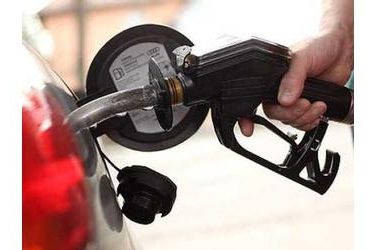Oklahoma gasoline price average at six-week low
Team Radio Marketing Group - May 8, 2017 3:10 pm

Pump prices across Oklahoma are still falling, AAA reports. The statewide average today of $2.07 per gallon of regular has not been this low since March 27, 2017. Only one state has a lower price average today than Oklahoma: South Carolina at $2.06.
“We’ve thrown the rule book out the window,” said Chuck Mai, spokesman for AAA Oklahoma. “Gas prices have turned tail and retreated at the very time of the year they usually can be counted on to rise.”
AAA says the trending decline is due to an unseasonable glut of gasoline in the U.S. market, record high refinery production rates, moderate demand and a recent drop in crude oil prices. Last week according to GasPrices.AAA.com, 46 states saw prices drop – some by at least 9 cents – with prices remaining steady in other parts of the country.
Current Price Averages per Gallon of Regular Gasoline
- Tulsa – $2.00, down 12 cents from one month ago … up 8 cents since 5/8/16
- Oklahoma City – $2.04, down 11 cents from one month ago … up 10 cents since 5/8/16
- Oklahoma – $2.7, down 9 cents from one month ago … up 11 cents since 5/8/16
- U.S. – $2.35, down 4 cents from one month ago … up 14 cents since 5/8/16
Quick Stats
- The nation’s top ten markets with the largest weekly decreases include: Ohio (-9 cents), Michigan (-9 cents), Indiana (-9 cents), Illinois (-7 cents), Delaware (-6 cents), Kentucky (-6 cents), Missouri (-6 cents), Florida (-5 cents), Kansas (-5 cents) and Maryland (-4 cents).
- The nation’s top ten markets with the biggest changes in the last year include: Alaska (+44 cents), Hawaii (+42 cents), Washington (+40 cents), Oregon (+34 cents), New Jersey (+30 cents), New Mexico (+27 cents), Montana (+26 cents), North Dakota (+24 cents), Nevada (+21 cents) and Pennsylvania (+21 cents).
Global Market Dynamics
Market watchers say oil prices may start to rebound after encouraging remarks from the Russian and Saudi Arabian energy ministers over the weekend. The energy ministers stated that there is budding consensus to extend production cuts beyond the June 30 deadline and into 2018, signaling that OPEC and non-OPEC producers are willing to take necessary steps to rebalance the market. Since the cuts were enacted, U.S. oil production has increased more than 10 percent since mid-2016 to a total of 9.3 million barrels per day and close to levels of the world’s top producers – Russia and Saudi Arabia.
With some market predictions suggesting that U.S. production could soon reach 10 million barrels per day, OPEC and its partners must continue to restrict supply if their market correction goals are to be achieved. Additionally, U.S. drillers added 6 more oil rigs, bringing the total rig count to 703 and marking 16 weeks of growth, according to last week’s data from energy services firm Baker Hughes Inc. The U.S. rig count is now up a whopping 375 oil rigs when compared to last year’s count at this time. Continued increases in the supply and exploration of crude will certainly counter OPEC’s efforts to rebalance the market. Only time will tell if supply restrictions and rising demand will shorten the oversupply – and ultimately lead to higher retail prices at the pump.



